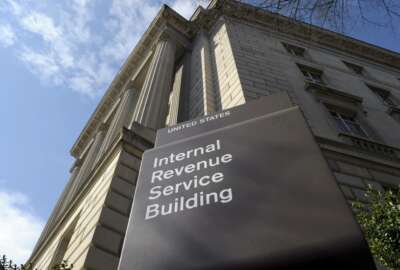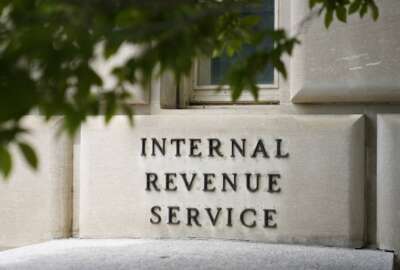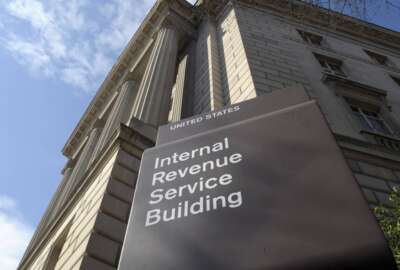

The IRS is planning to allow some taxpayers to test out a free, online tax filing platform that’s run by the agency, before the Biden administration decides...
The IRS is planning to allow some taxpayers to test out a free, online tax filing platform that’s run by the agency, before the Biden administration decides whether it should scale up the program for the rest of the public.
The IRS announced Tuesday it has developed a “direct file” system prototype that would allow taxpayers to submit electronically filed tax returns directly to the agency. The agency also released a report to Congress outlining the feasibility of the IRS running its own e-file system.
IRS Commissioner Danny Werfel told reporters the agency is focused on “meeting taxpayers where they are to ensure they have the options that work best for them for fulfilling their tax obligations.”
Werfel said the prototype, so far, has only been used for limited user research and usability testing. Taxpayers interact with the system in controlled usability testing sessions, and no real tax information has been used during these sessions.
“It’s not a fully functional system. The prototype was similar to early-stage development of products in a commercial and government environment,” Werfel said.
To further test the direct-file system, the IRS is looking to invite some taxpayers to use the system to file their taxes during the 2024 filing season.
“The next step would be to now further test, in a larger-scale way, that very product, now placing it out in the field — not making a commitment to full-scale or any permanency,” Werfel said.
The IRS partnered with the U.S. Digital Service to build a direct file prototype. The prototype is mobile-friendly and is available in multiple languages.
Werfel said the IRS has not yet finalized how many individuals the IRS will include in the pilot during next year’s filing season.
“There will be members of the public, if the pilot is successful, that will interact on a direct-file solution. And we hope to learn additional information about the future of direct file through this pilot,” he said.
The Inflation Reduction Act gave the IRS nearly $80 billion to rebuild its workforce and modernize its IT over the next decade.
The legislation, as part of that spending, gave the IRS $15 million to issue a report on whether a direct e-file system would be cost-effective for the IRS to operate, and if taxpayers would use the system, rather than rely on third-party tax preparers.
“The report better positions the U.S. government to make an evidence-based decision on whether and how to move forward with the direct file option,” Werfel said.
The National Taxpayer Advocate, the Government Accountability Office, members of Congress and several good-government groups have called on the IRS to create a free IRS preparation and filing tool to improve the taxpayer experience.
The report shows that a majority of taxpayers are interested in using an IRS-provided tool to file their taxes.
The IRS sent its final report to the Treasury Department, which then directed the agency to launch a direct-file pilot to decide whether or not to deploy a full-scale version to the public.
Laurel Blatchford, the Treasury Department’s chief implementation officer for the Inflation Reduction Act, said taxpayers on average spend about eight hours and $140 preparing their taxes every year.
Blatchford said the direct file system would encourage taxpayers to file their returns electronically and would help eliminate the IRS’s paper backlog.
Werfel said the potential full-scale launch of an IRS direct file system would give taxpayers more options for filing their taxes. Taxpayers can still use tax software, work with private tax professionals or file a paper tax return, if they prefer.
“Taxpayers will always have choices for how they file their taxes,” Werfel said. “We’d rather they filed it electronically, sure, but they have that choice. People should use the filing option that works best for them, for their personal and their financial situation.”
The direct e-file program, if it comes into focus, would significantly expand what the IRS has been doing under its Free File program for more than 20 years.
The IRS under the Free File program has partnered with private companies to provide free electronic tax preparation and filing for taxpayers who have incomes below a certain threshold.
The IRS extended its relationship with the Free File Alliance through a memorandum of understanding that lasts through 2025.
“This extension provides additional time for the IRS and the Free File Alliance to explore ways to improve the program, and so we remain absolutely committed to that,” Werfel said.
For the 2022 filing season, the IRS required Free File participants to offer free tax filing services to taxpayers with an adjusted gross income limit of $73,000 or lower.
About 70% of Americans are eligible to file electronically using the IRS’s Free File program, but a GAO report from April 2022 found that only 4 million individuals, or about 4% of all eligible taxpayers, used the program to file their federal tax returns.
Werfel said that “under any scenario, the IRS cannot run the tax system alone,” and the agency will still rely on an extensive network of tax professionals, software providers and other organizations that work directly with taxpayers.
“This report changes none of that. The pilot we are proceeding with to test a new solution for taxpayers is just one part of our larger effort to do better for taxpayers and the nation we serve.”
Blatchford said that over the next few months, IRS will work through several important “operational questions,” including how to integrate the direct-file pilot with state tax administrations, the complexity of tax returns it would be able to process, and how to provide the best customer support to pilot participants.
Werfel said the report shows the IRS has the technical capacity to operate a direct file platform, but “doing so would require additional resources and add complexity to IRS operations.”
Werfel said the IRS has seen “periods of a failure or setback” when it comes to previous IT modernization efforts, but added that unstable funding from Congress has been a root cause of those shortcomings.
“Sometimes we get the funding we expected. Sometimes we find ourselves in a continuing resolution. Sometimes the funding is zeroed out, and that can destabilize an effort to meet cost, schedule and performance of the technology advancements,” he said.
Werfel said he expects the IRS with its multi-year IRA funds will be in a better position to manage its IT modernization projects.
“We now can plan differently, so one of the factors that caused some of our challenges has been addressed. So I move forward with a sense of confidence that we can achieve this,” he said.
Copyright © 2024 Federal News Network. All rights reserved. This website is not intended for users located within the European Economic Area.
Jory Heckman is a reporter at Federal News Network covering U.S. Postal Service, IRS, big data and technology issues.
Follow @jheckmanWFED



